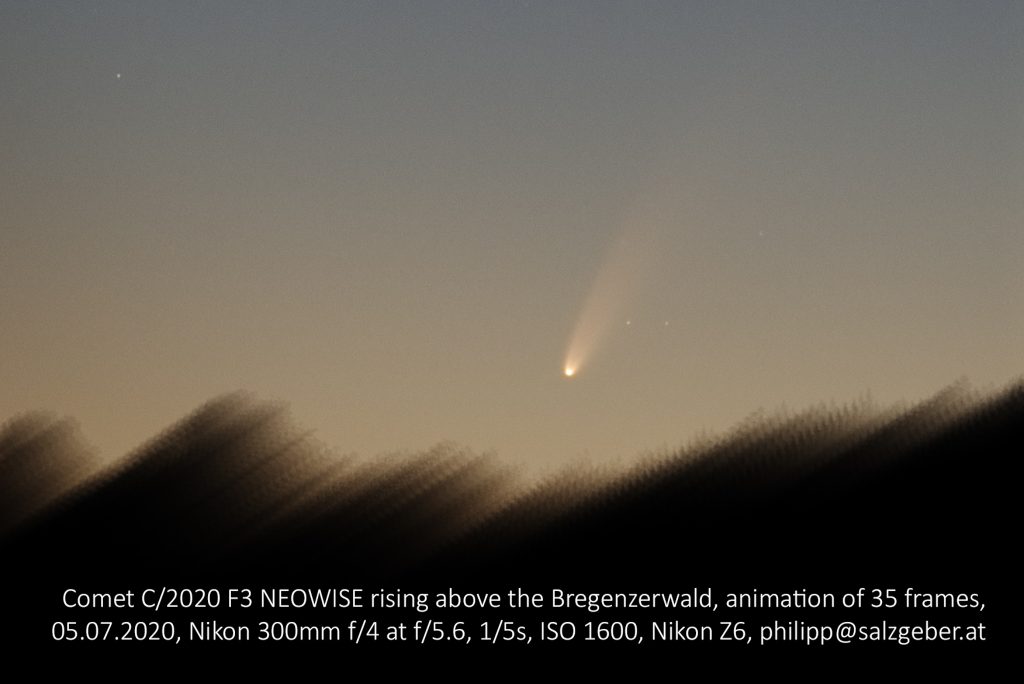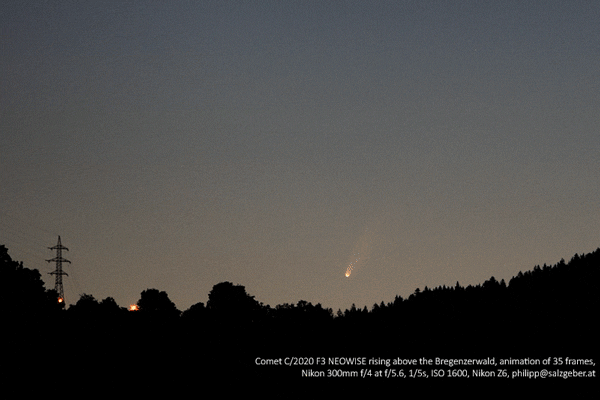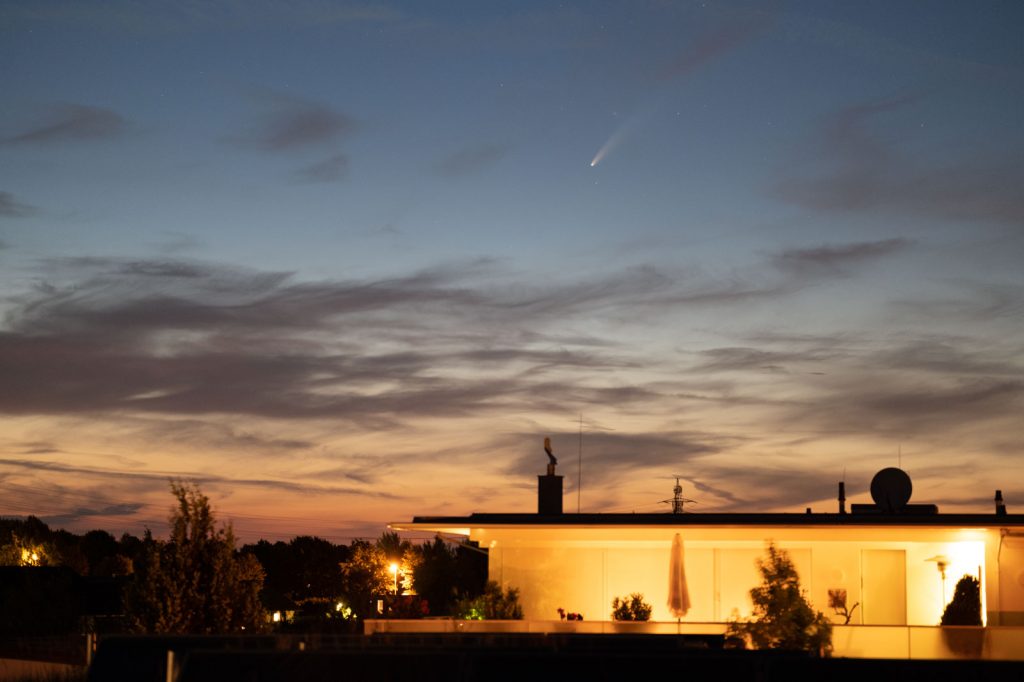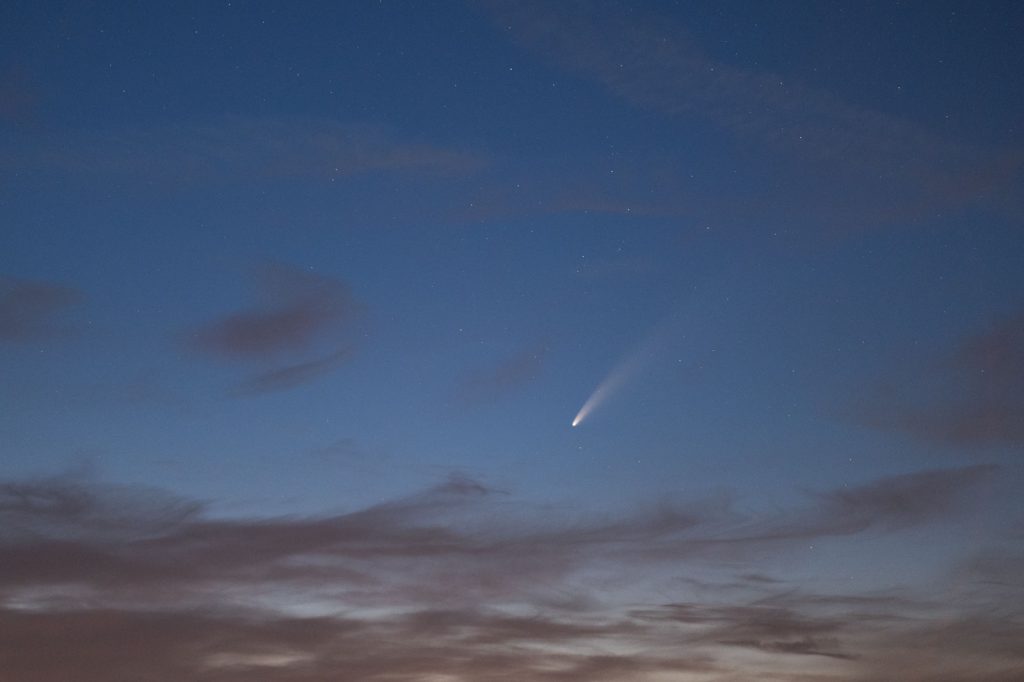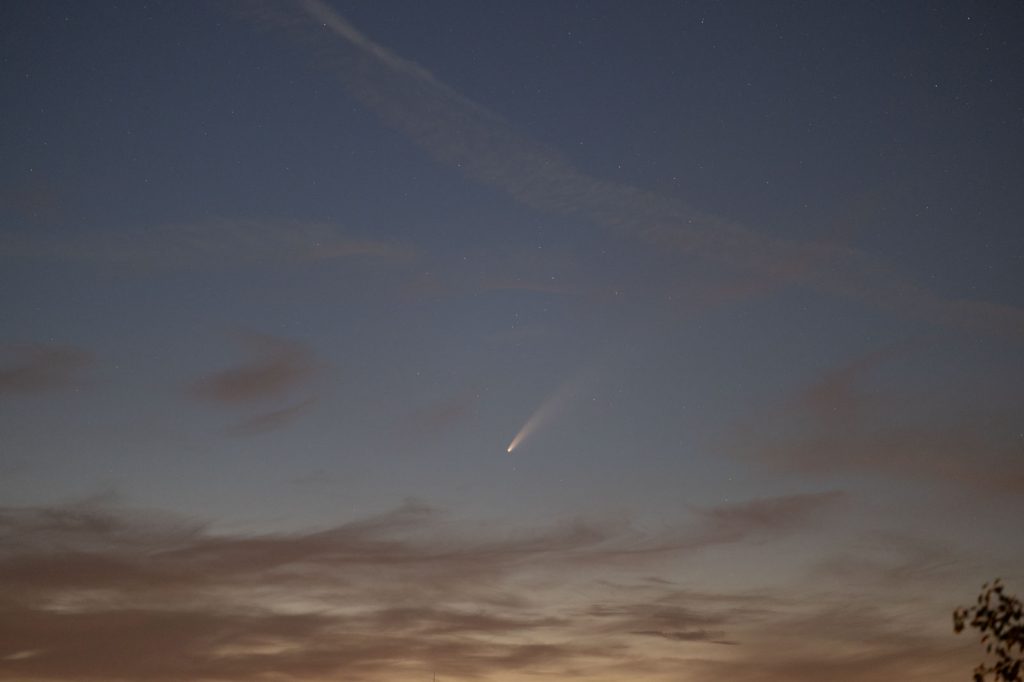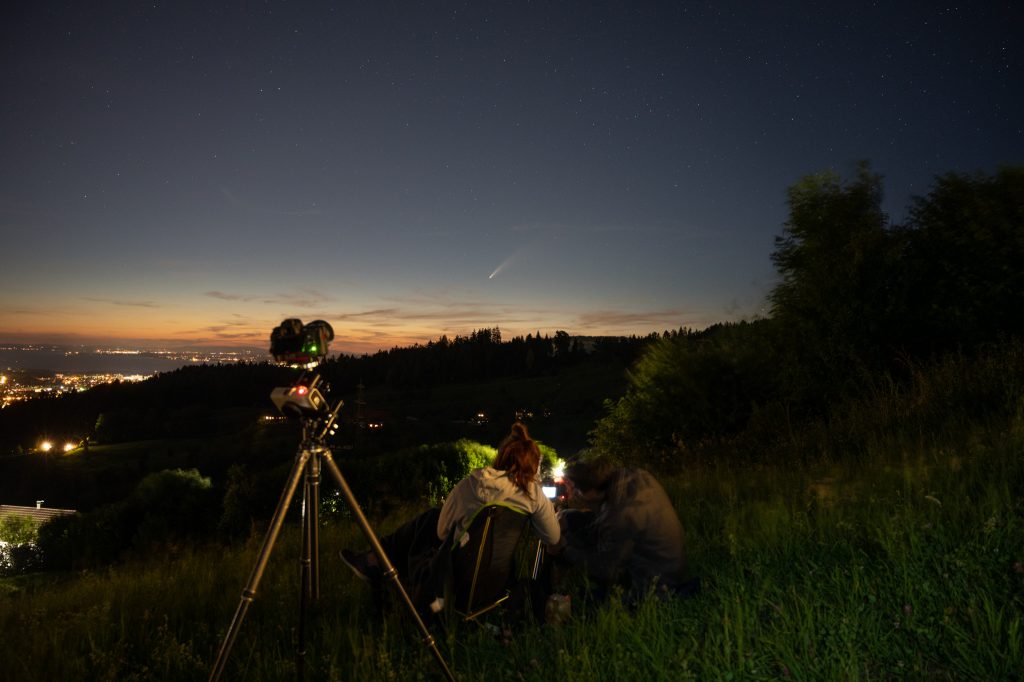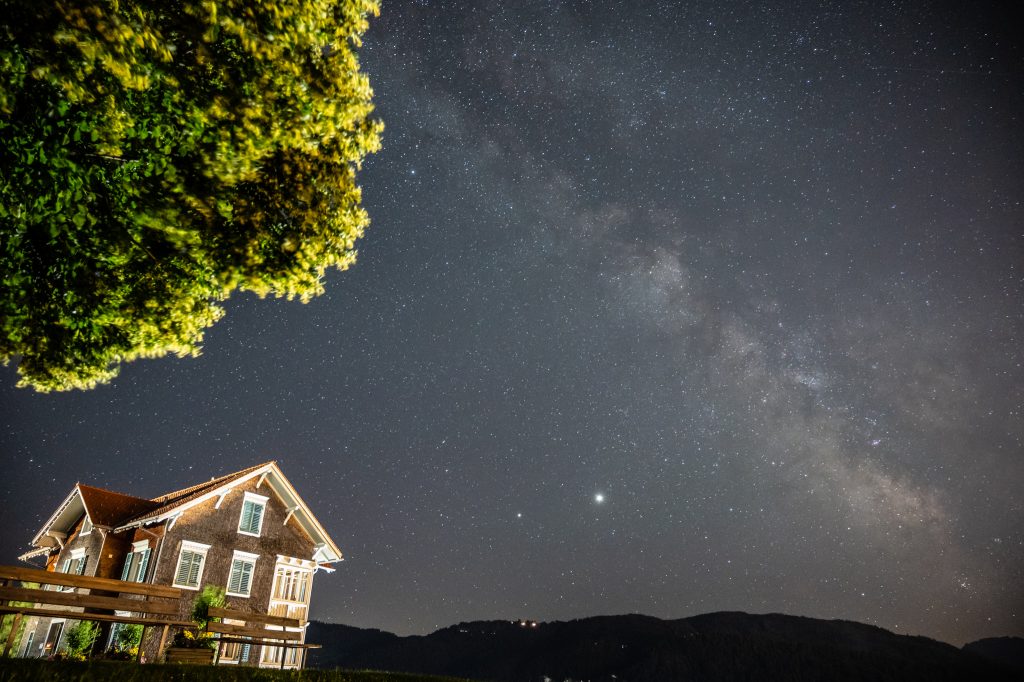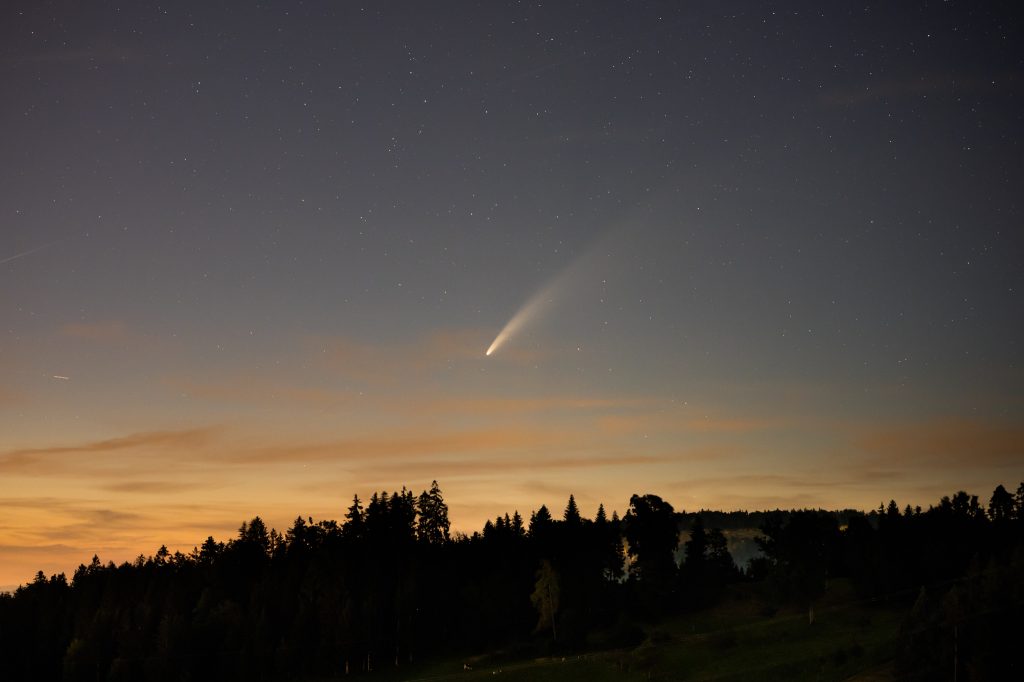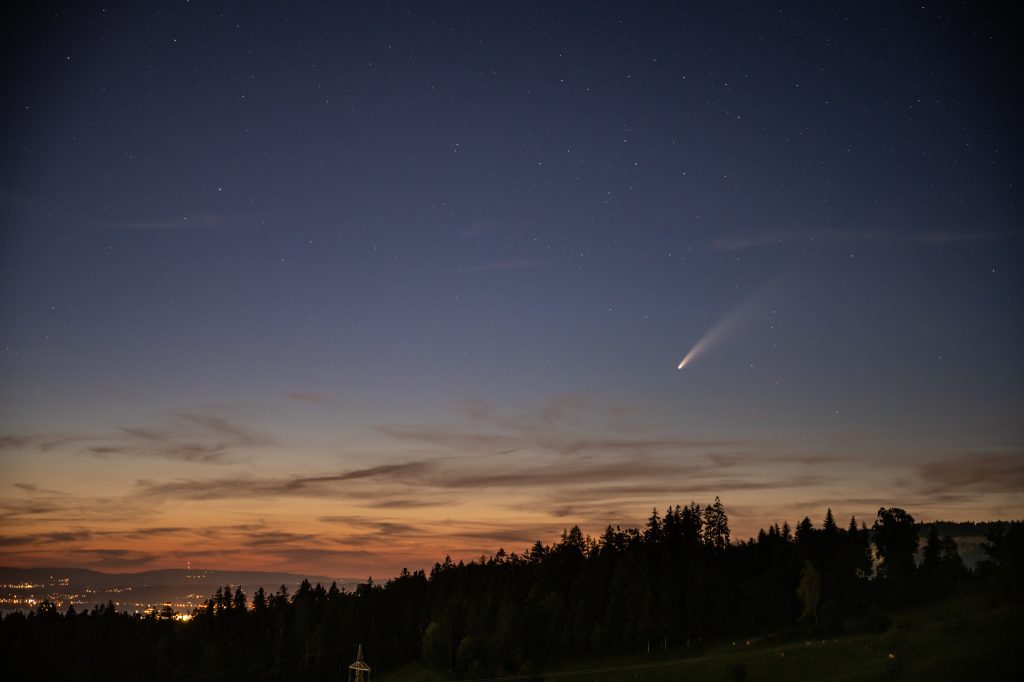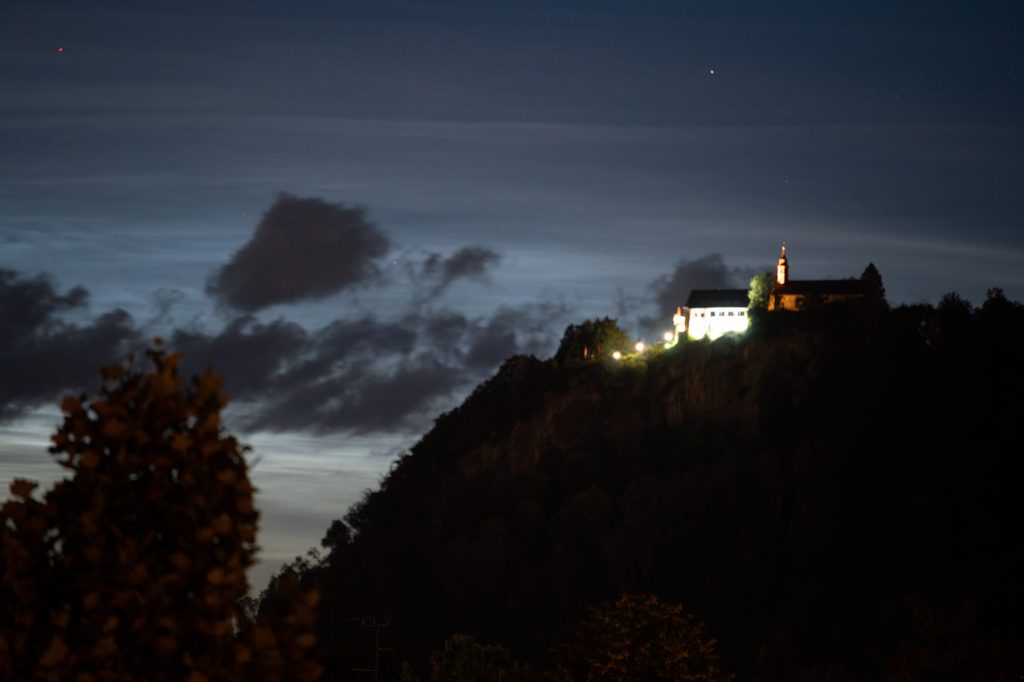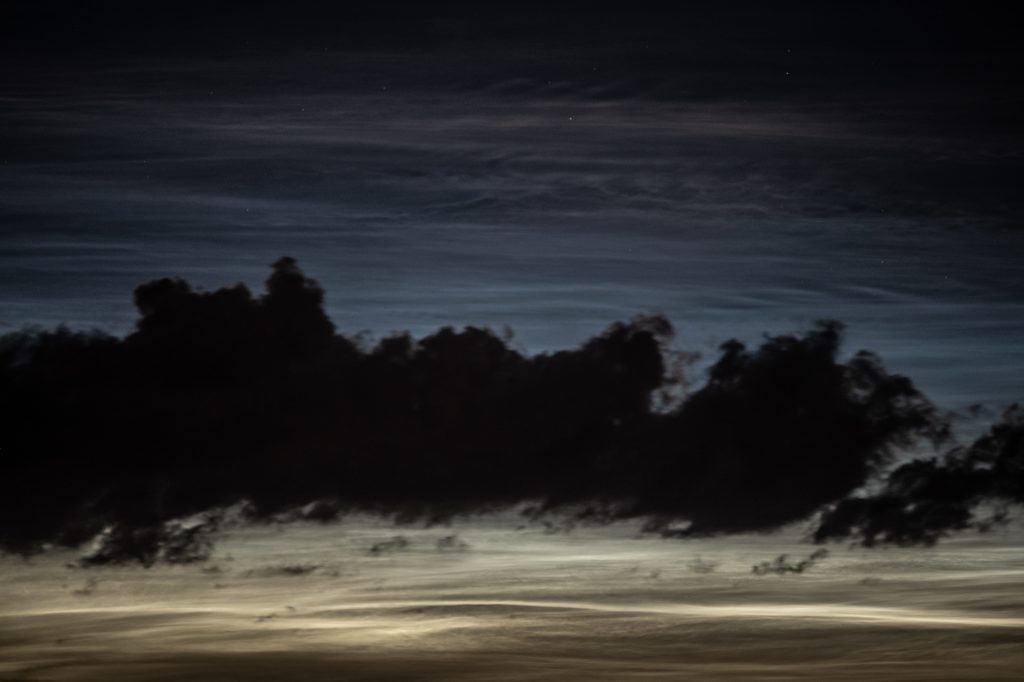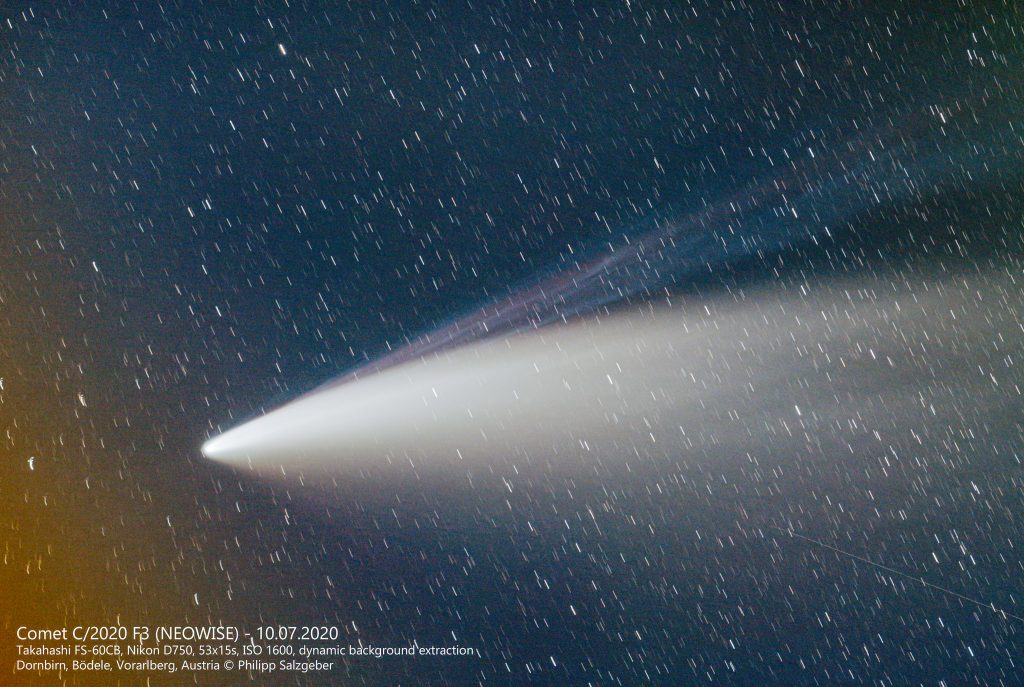
2020-07-23
Ever since the comet moved to the evening sky I had to contend with clouds getting in the way. Tonight the comet was continuing to grow dimmer, in my 10×50 binoculars the coma looked as bright as Omega Ursae Majoris which is only 4.7 mag, and was barely visible with the naked eye using averted vision.
but with photographic means and aggressive image development an impressively long tail can be teased out of the image. In the inverted and equalized black and white version the tail can be traced to a length of about 27°
During capture of an earlier sequence, which was too cloudy I managed to catch a meteor which I also saw visually and estimated it’s brightness to be about mag 2.
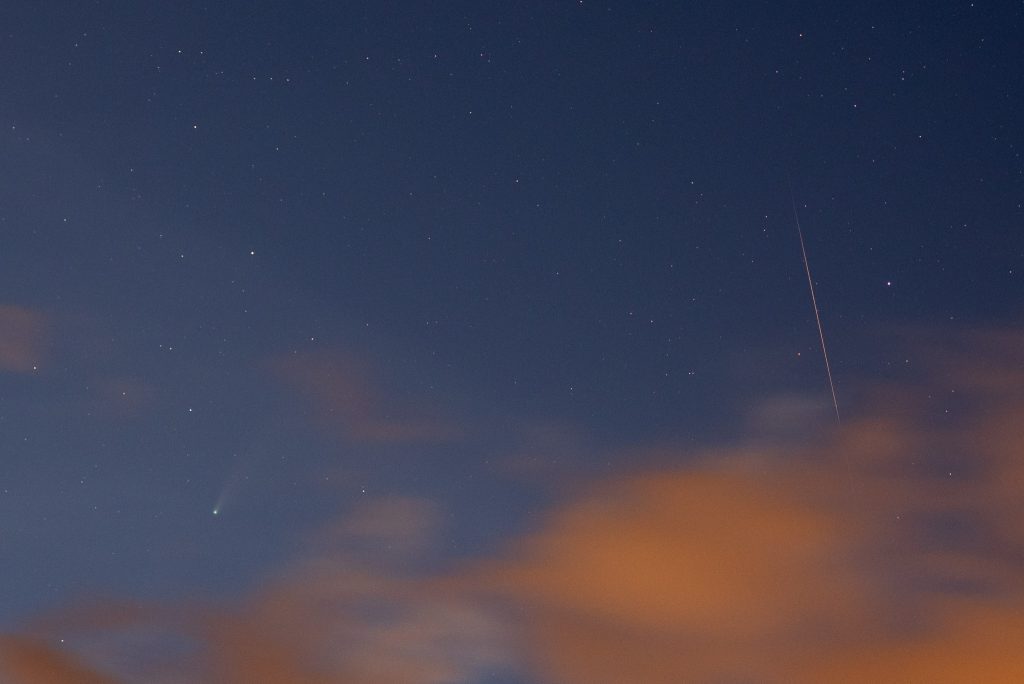
In the meantime the other camera was busy catching lightning behind the Wolfurt castle
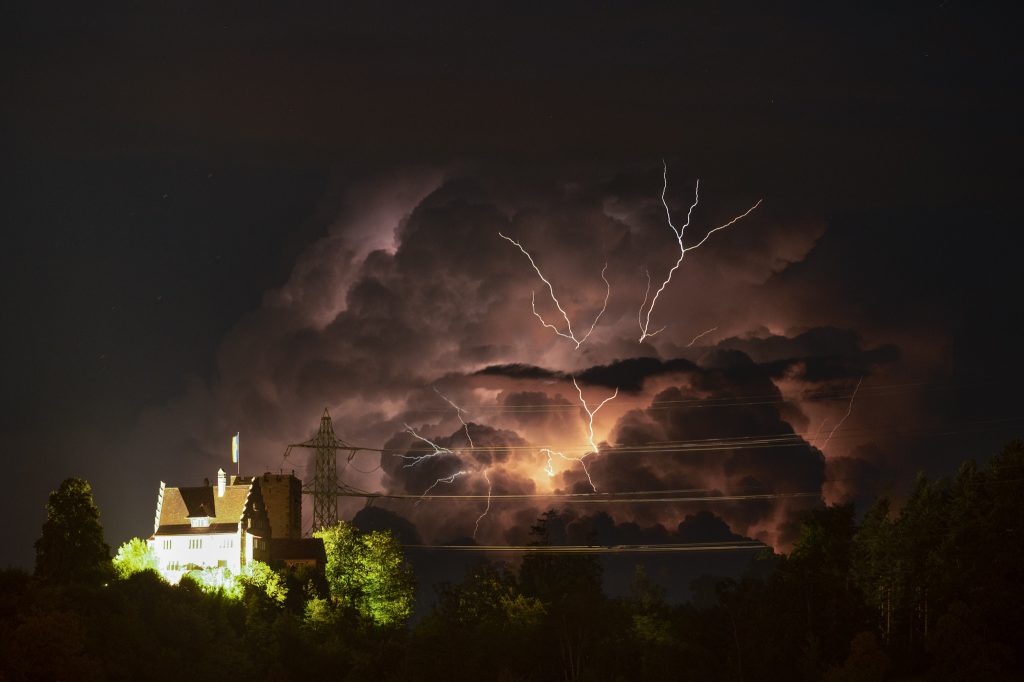
2020-07-20
Observing with friends from the Vorarlberger Amateur Astronomen, we were joined by a TV cameraman from the local tv station, the news clip was shown on 2020-07-21 with me talking about NEOWISE. As the link will only be available for 7 days I will not post it here, the station also published an article about the comet on it’s website: https://vorarlberg.orf.at/stories/3058525/
The comet has grown fainter still, but the tails are still impressively long on longer exposures
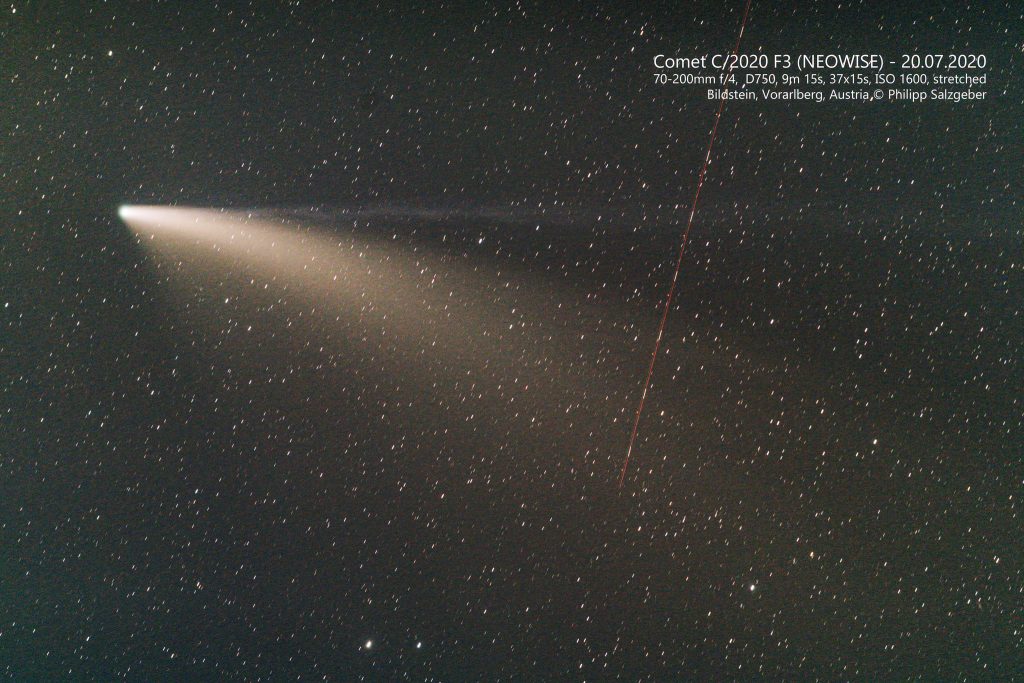
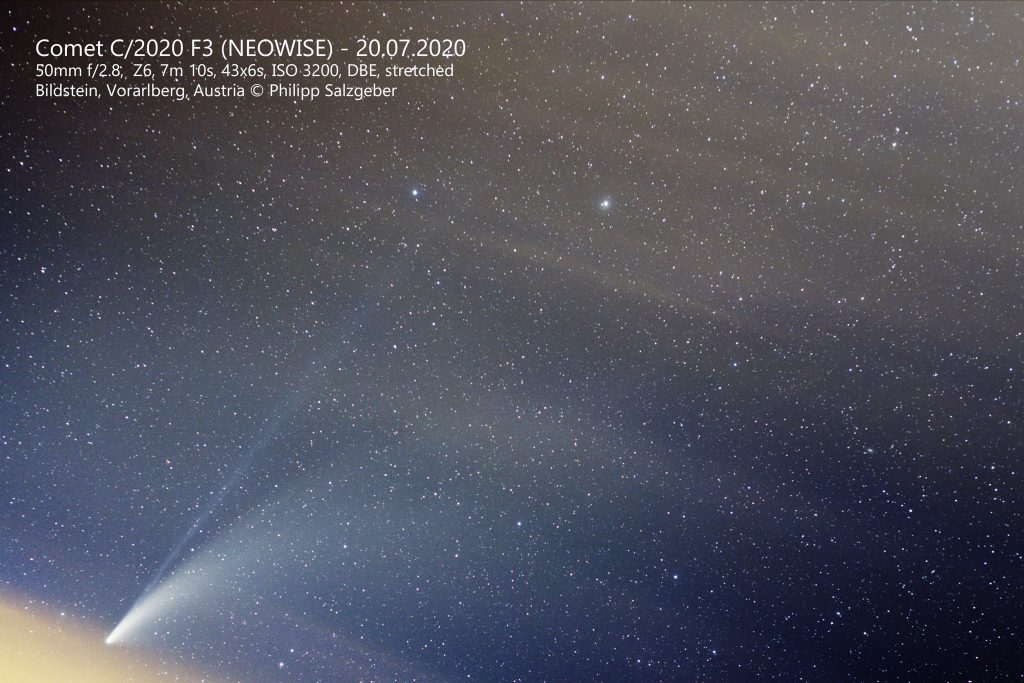
2020-07-19
Observing from home, in between clouds – the comet’s coma was distinctly green on the LCD of the camera, on the images I measured the tail to be about 27°.
2020-07-18
Again observing from Bildstein – the sky was very clear in the afternoon, but after it became dark thin clouds started to move in and left their marks on the exposures I intended to stack.
To me it looks like the comet started to fade. the red streak in the plasma tail is not visible any more.
But in the dark sky it is still easily visible with the naked, eye the people using my 10×50 binoculars realized that they could actually see the comet moving in reference to the stars – especially iota UMa (Talitha) which it was very close to. With the unaided eye I estimated the tail to be about 3° long.
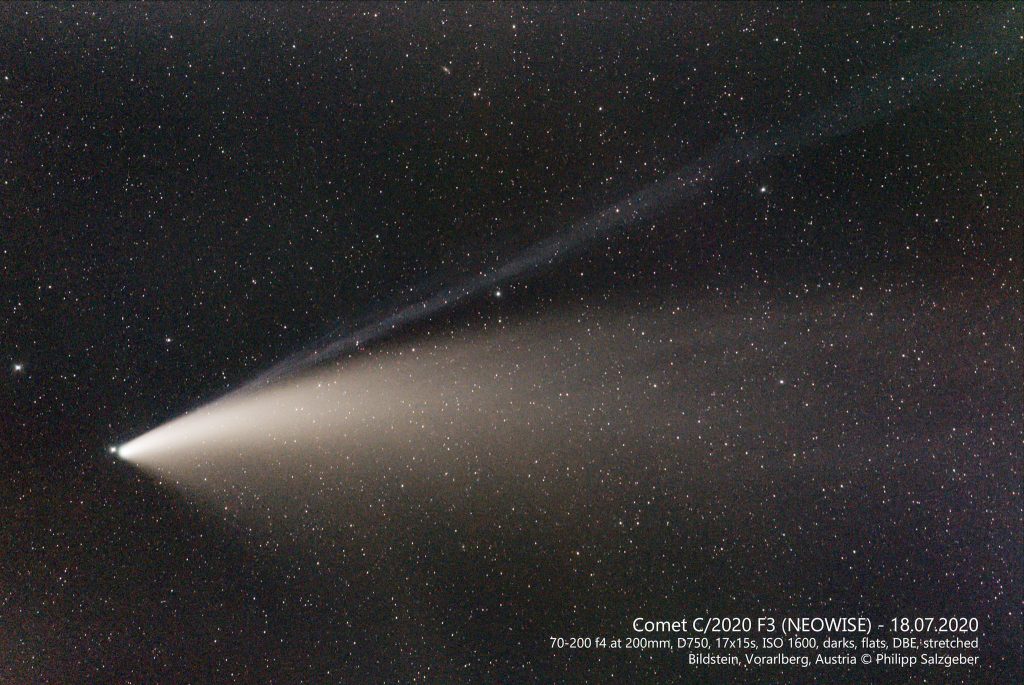
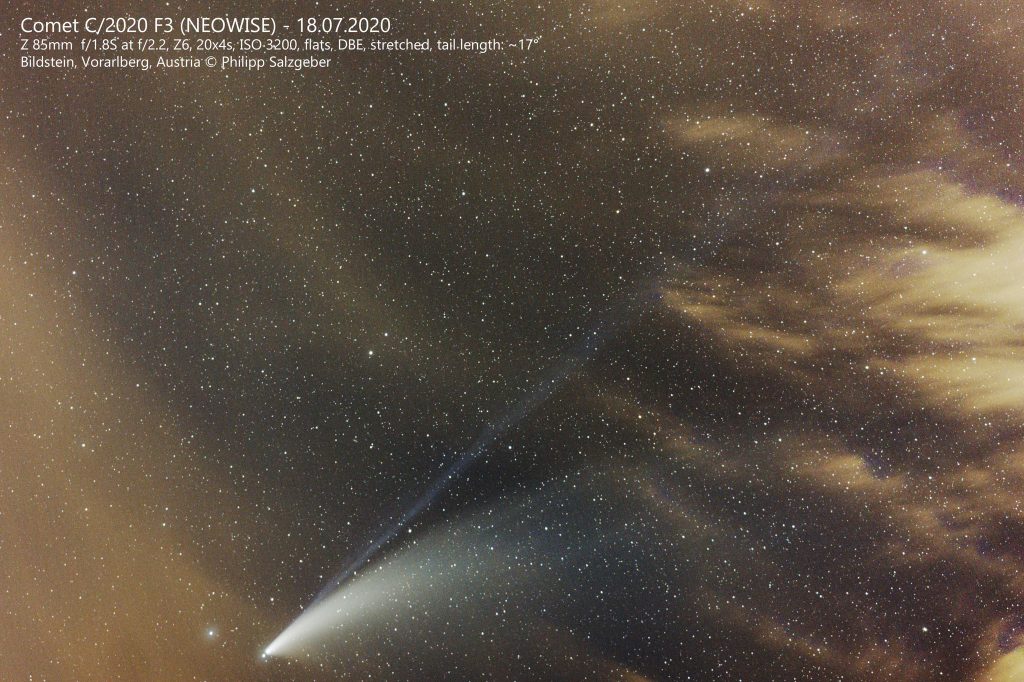
Bildstein, Vorarlberg, Austria © Philipp Salzgeber
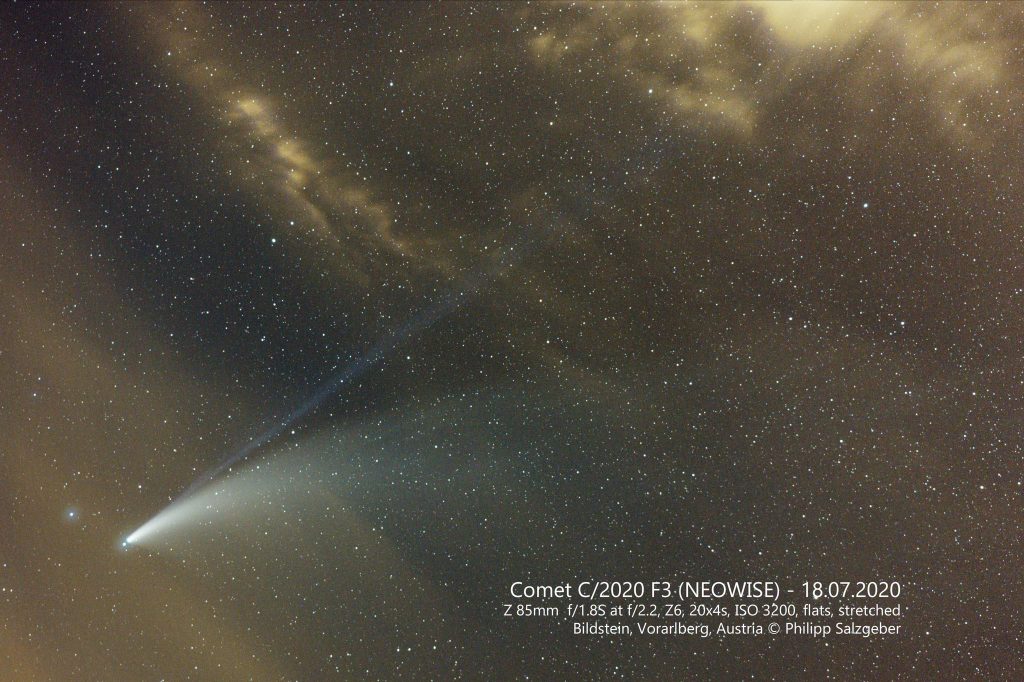
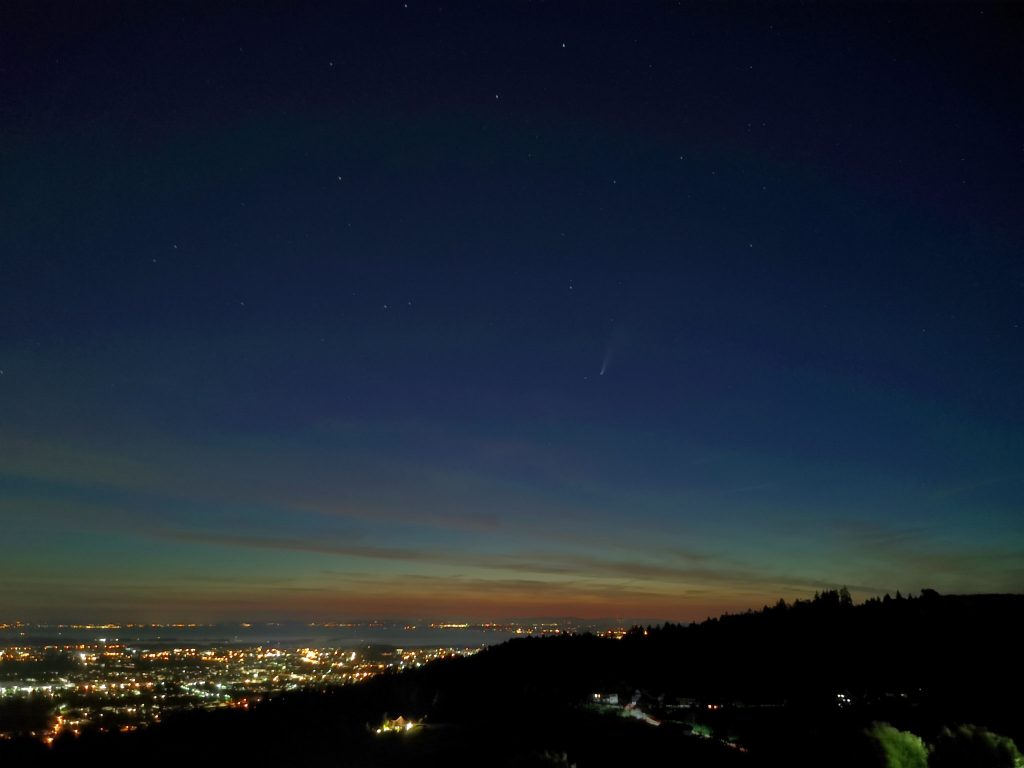
While my cameras were busy Guntram and me held an improptu astronomy and comet class with some young adults who enjoyed the sunset and the priest of the nearby church who came to check out what the fuss was about.
2020-07-15
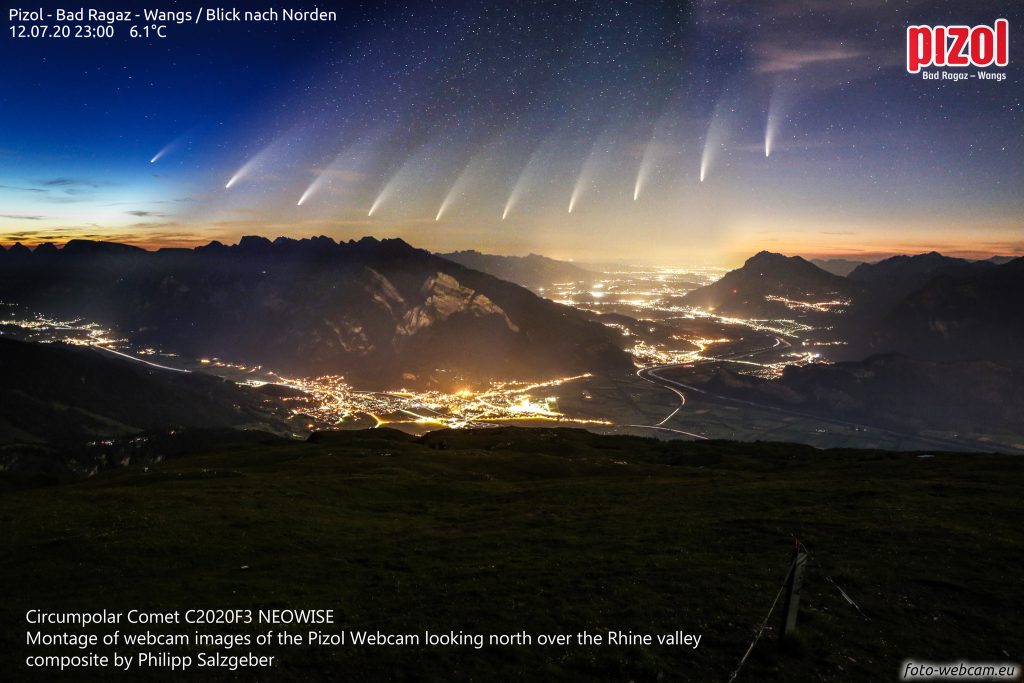
When looking at images from the Feldkirch webcam () I got the idea for a composite image showing the path of the comet over the night. But the view of the camera was obstructed by a grass or a twig, so I searched for a camera with a better view.
Using the map I quickly found the Pizol webcam nearby in Switzerland which looks almost directly north and shows quite a bit of sky: Pizol Webcam, and downloaded the images of the night from 12.07.2020 and assembled them in Photoshop in layers and posted the image on Facebook and Twitter but I was not happy with the changes in color and contrast in the individual layers, so on the next day I tweaked the brightness levels and color of each layer, and created the image above.
In the meantime the image got some nice feedback and was seen by Adam Block, he contacted me and forwarded the image to the people who are administering the APOD site, resulting in this image becoming the Astronomy Picture of the Day for July 15th 2020:
https://apod.nasa.gov/apod/ap200715.html
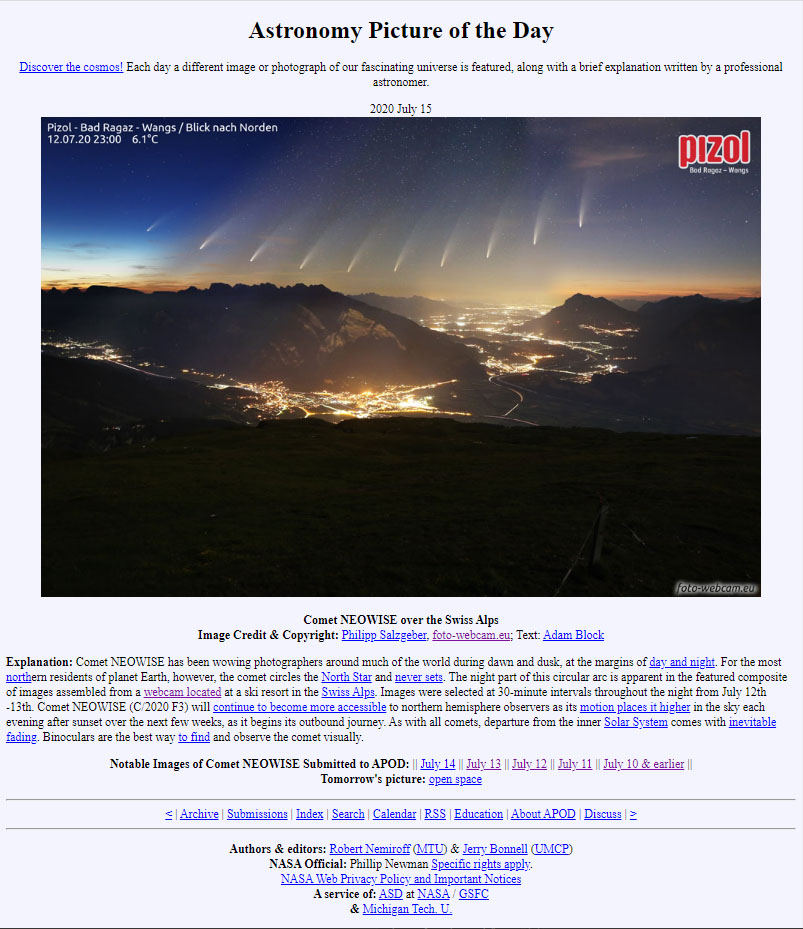
After I shared the image on social media I was contacted by a swiss media company for an interview: fm1 today which resulted in many more articles in online an print media in Switzerland and Liechtenstein (watson.ch, blick.ch, pizol.com, suedostschweiz.ch, nau.ch, stgallen24.ch, 20min.ch, tagblatt.ch) Austrian media were slow to pick it up, but the national radio station Ö3 had a segment on the APOD in their Netzupdate in the morning show of july 16th (Ö3)
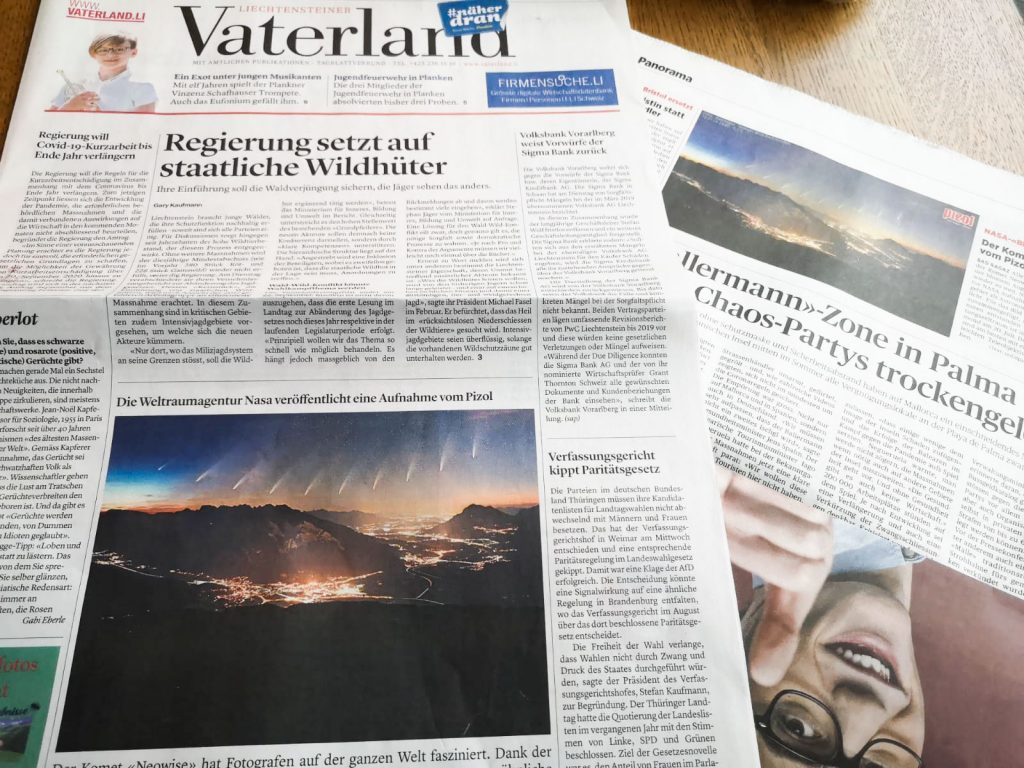
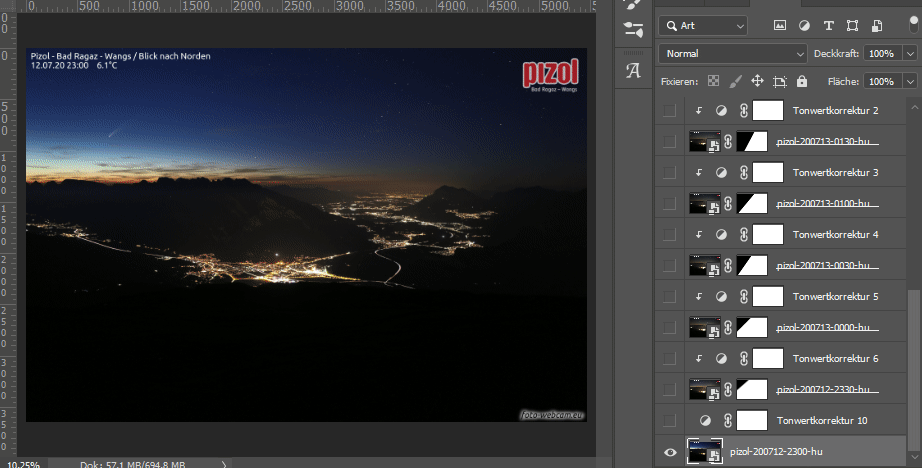
2020-07-13
2020-07-12
And also in the evening
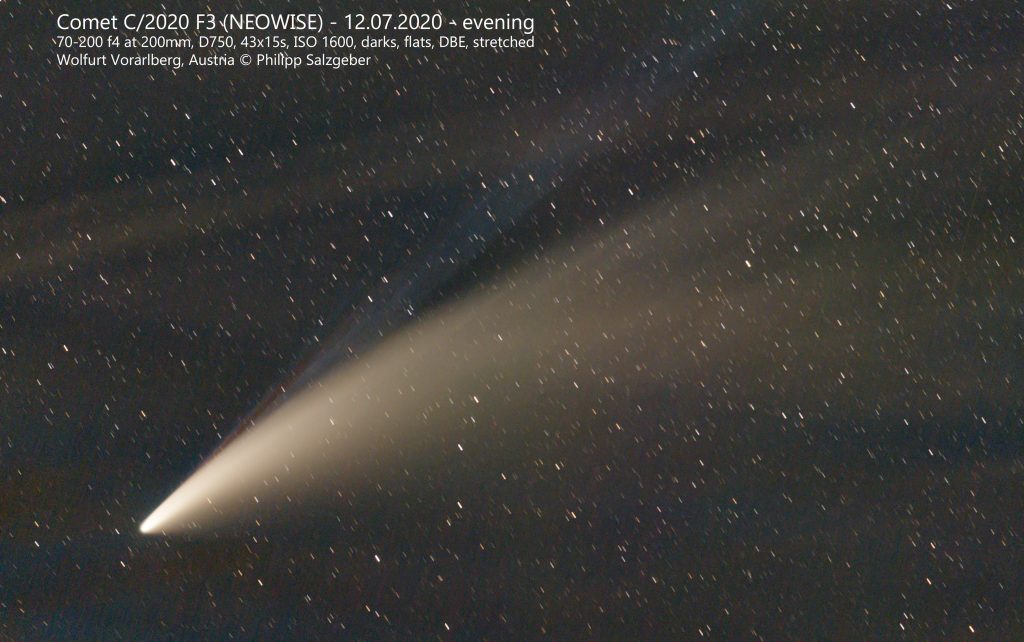
More Early morning images of the comet:
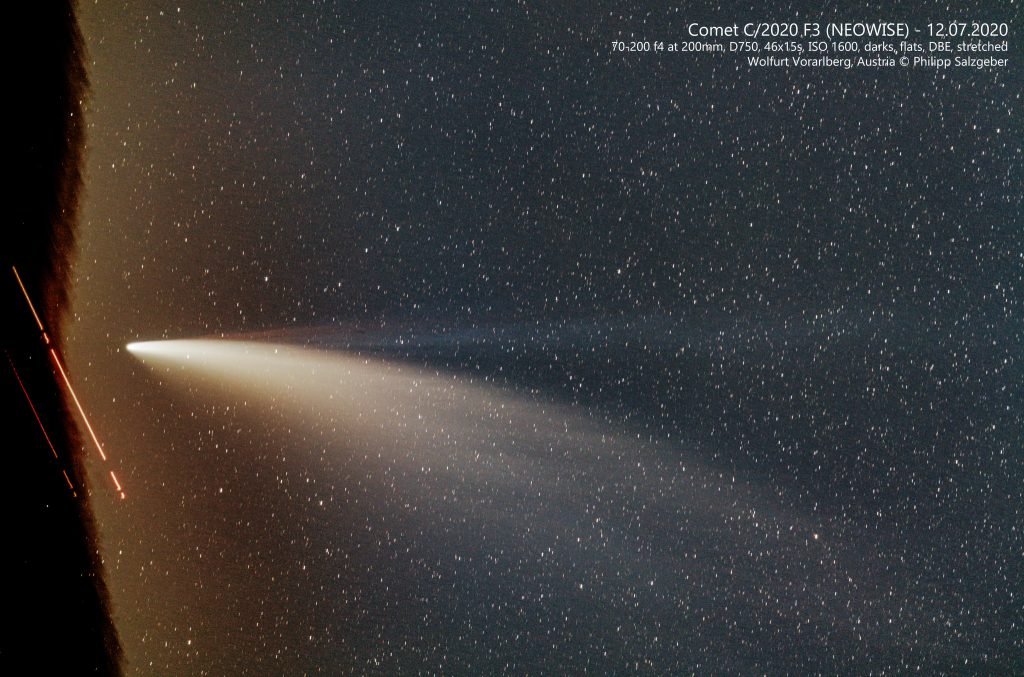
Wolfurt Vorarlberg, Austria © Philipp Salzgeber
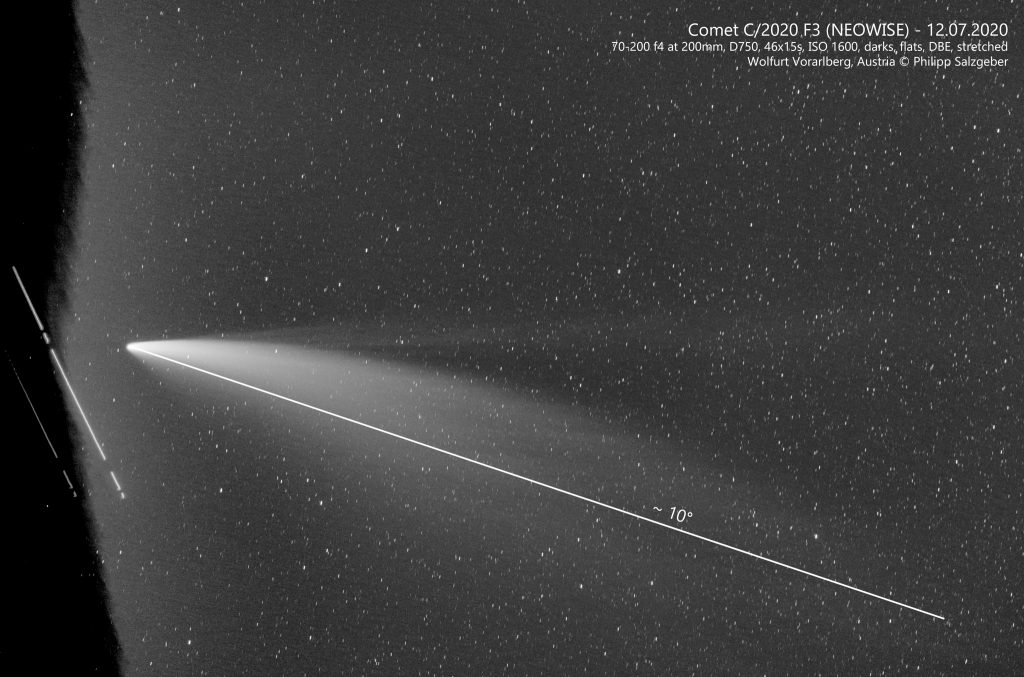
2020-07-11
Comet Neowise is now also visible in the evening sky in Austria, images taken in Hard, Vorarlberg, Austria. My wife and me took part in a sundowner cruise on the lake of constance, and later sat on a bench and watched the night sky across the lake above the german shore. I scanned the clear patches of sky with the 10×50 binoculars, and suddenly I saw the comet peeking out below a band of clouds. It was not visible to the naked eye this evening, I assume there was too much haze on the horizon.
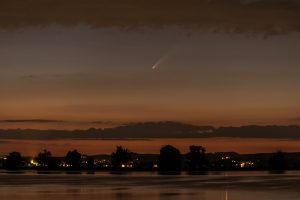
Comet 2020F4 NEOWISE 11.07.2020 – Nikon Z6, 70-200 f4, 4s at f/4.0, ISO 3200, Hard, Vorarlberg, Austria 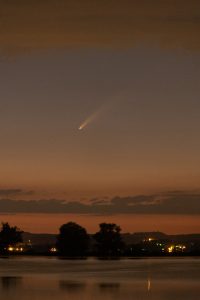
Comet 2020F4 NEOWISE 11.07.2020 – Nikon Z6, 70-200 f4, 2s at f/4.0, ISO 6400, Hard, Vorarlberg, Austria 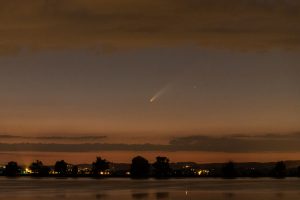
Comet 2020F4 NEOWISE 11.07.2020 – Nikon Z6, 70-200 f4, 2s at f/4.0, ISO 6400, Hard, Vorarlberg, Austria
2020-07-10
With the comet rising nearer to the north each day for the next session I choose a different observing spot. We met at Bödele at Dornbirn at about 1:30 am. Another friend joined our photography expedition. It didn’t take long for the dim ghostly end of the tail begin to appear over the trees on the horizon.
When the comet was higher in the sky, it was a very distinct naked eye object with a tail which I judged to be about three degrees long. For one of our group it was the first comet of his life, but me and Guntram were also very excited at the brightness and beauty of the comet.
From time to time breezes of warm air caught us by surprise. The NLCs kept to the horizon this time, and when the ISS passed over our heads and Venus rose in the east we were very happy indeed.
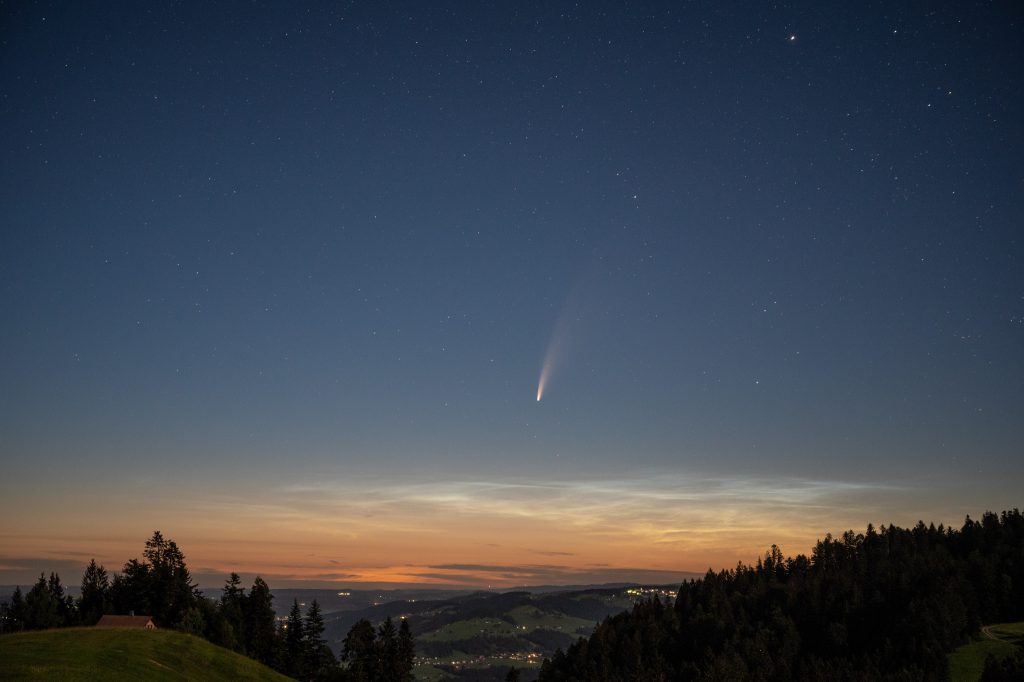
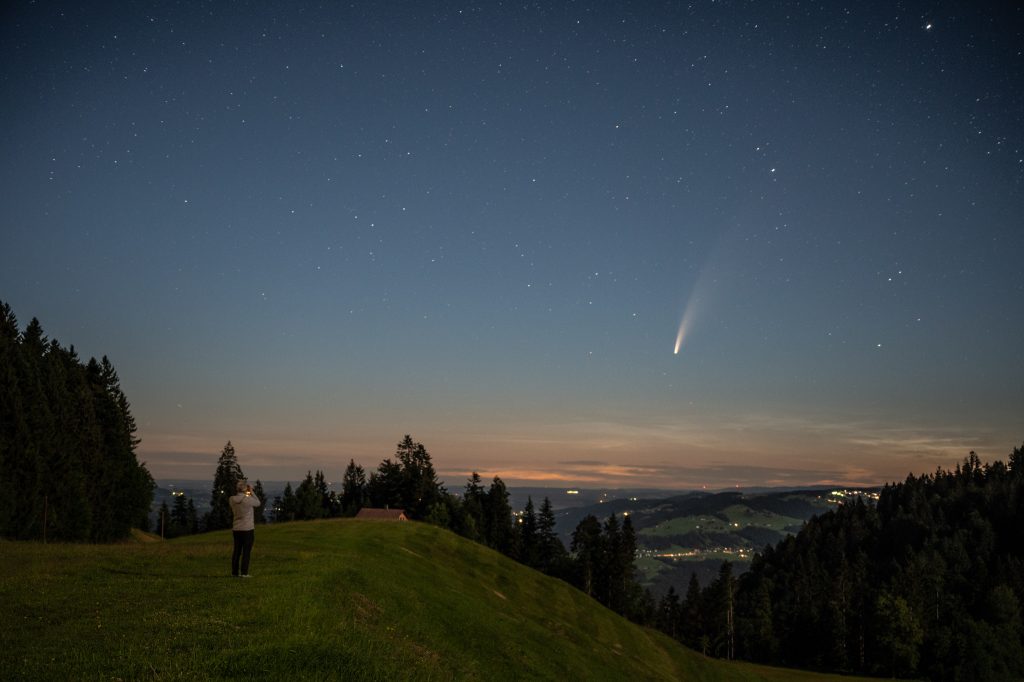
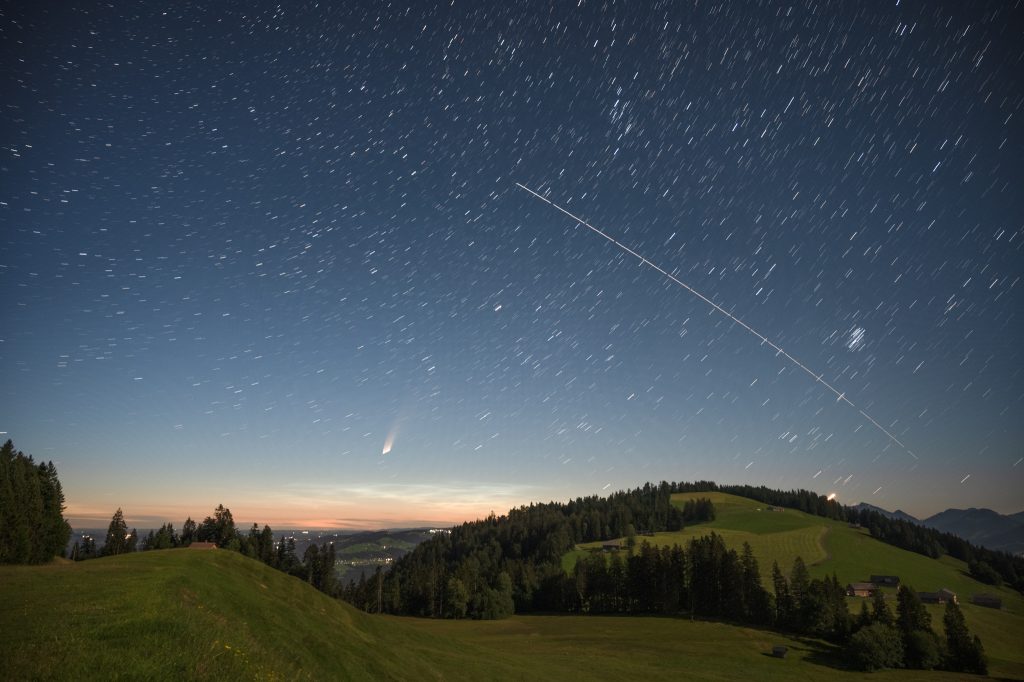
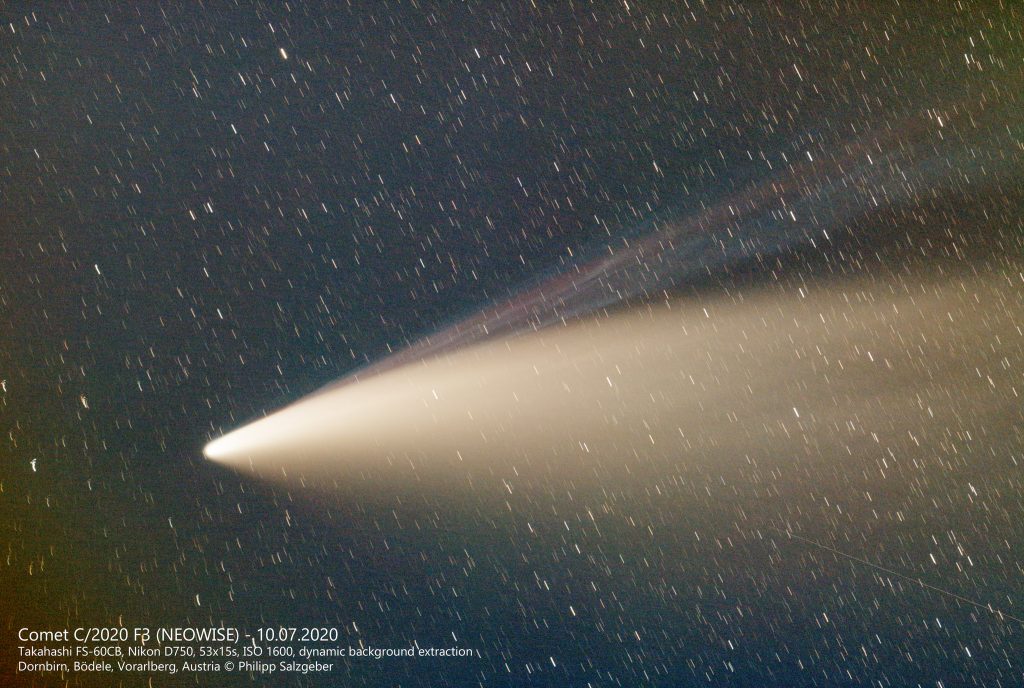
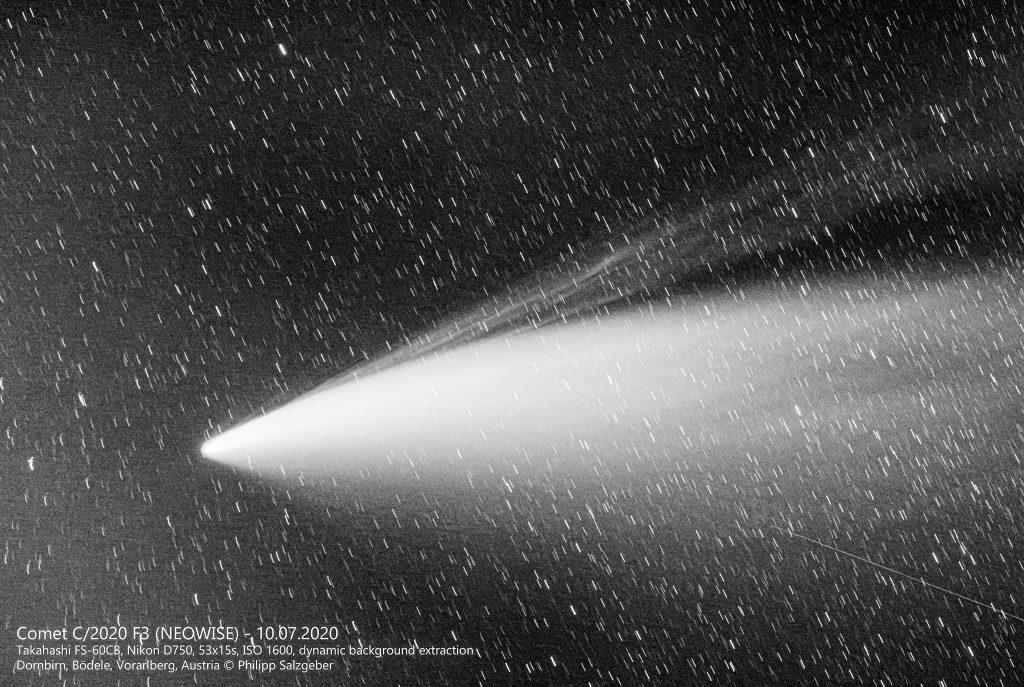
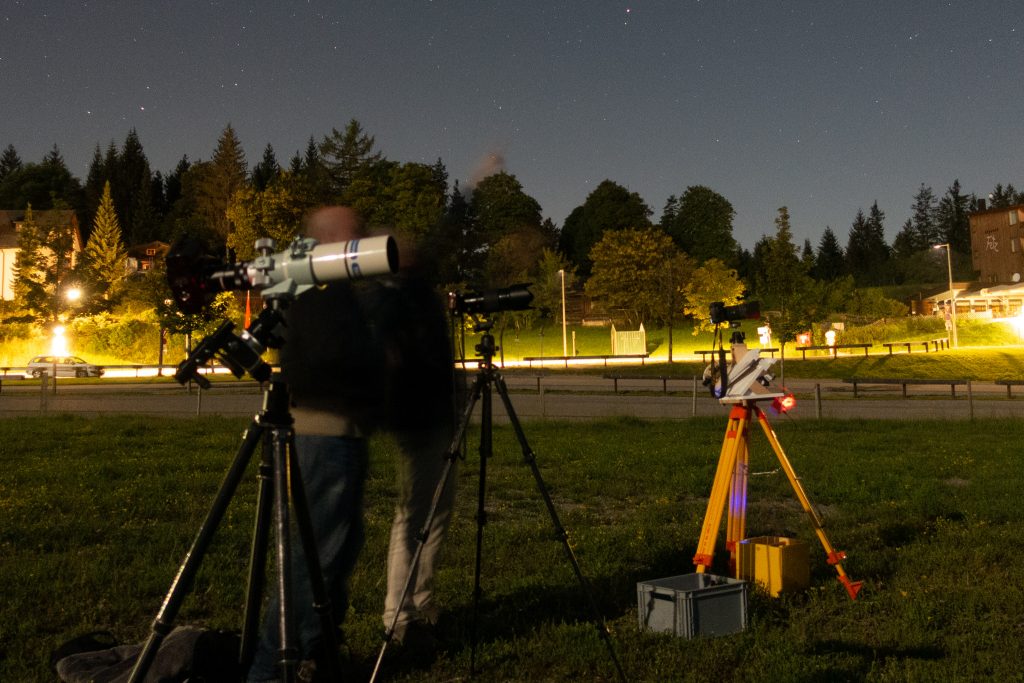
2020-07-08
For the next observing session I went to Alberschwende in the Bregenzerwald to a spot which has a very good view of the northern horizon. At first we discovered the tail showing up behind the horizon, an eerie sight!
Sadly noctilucent clouds appeared and obscured the view of the comet as it rose from the horizon.
My observing buddy Guntram brought a 16cm newtonian reflector with him, through the telescope the dark band in the tail behind the pseudonucleus was very obvious. Due to the low altitude of the comet, the air was not very steady, and the wobbly impression of the very bright pseudonucleus gave the impression that the comet was buffeted by the solar wind.
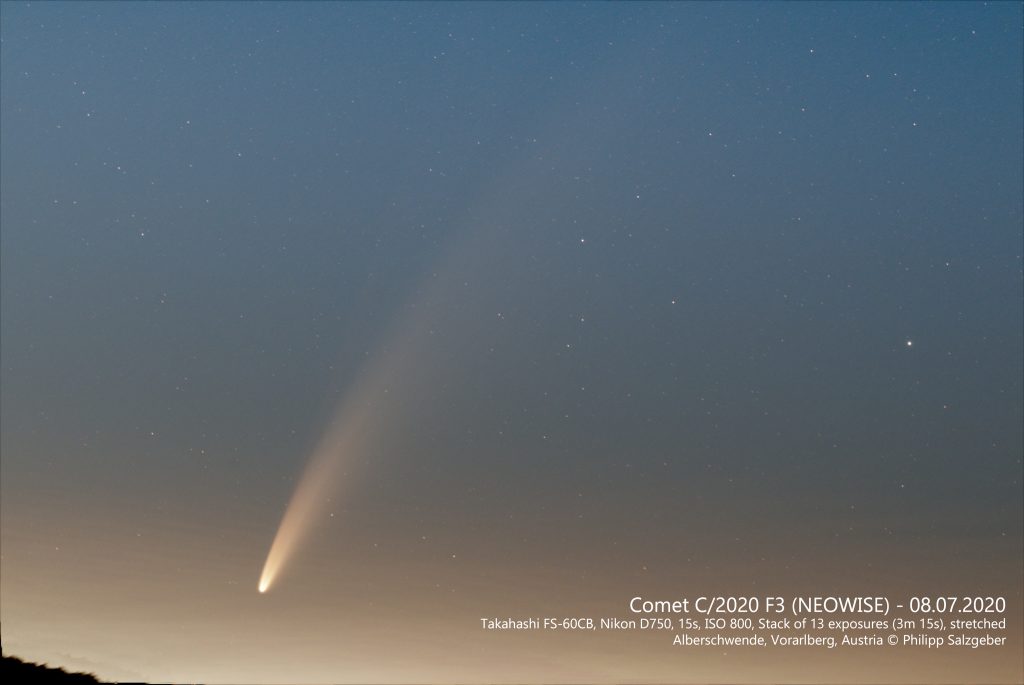
Alberschwende, Vorarlberg, Austria
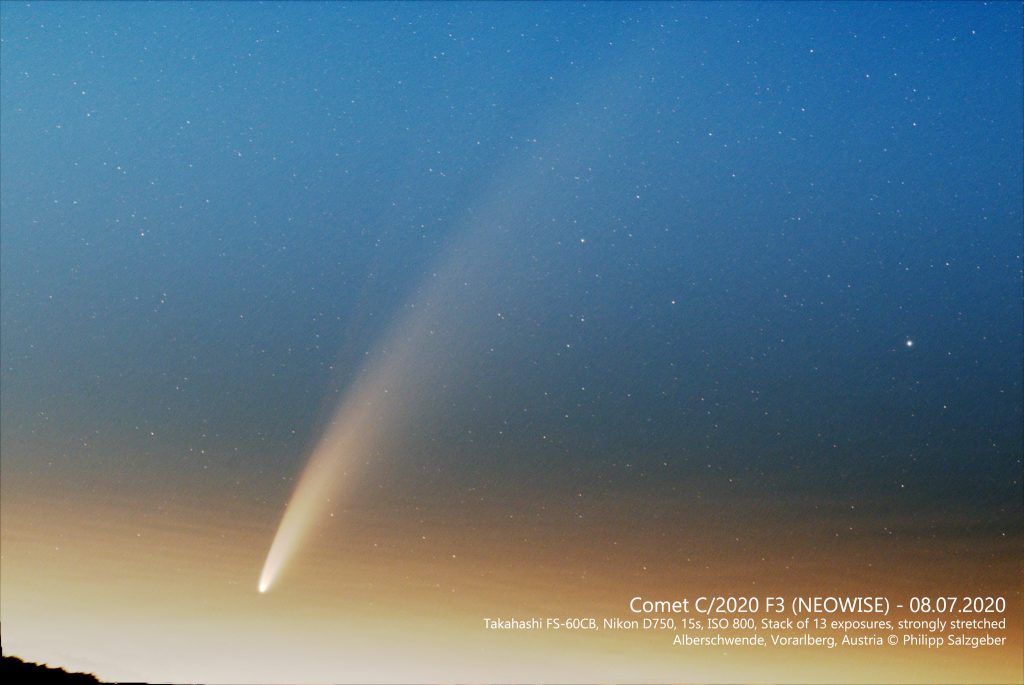
Alberschwende, Vorarlberg, Austria
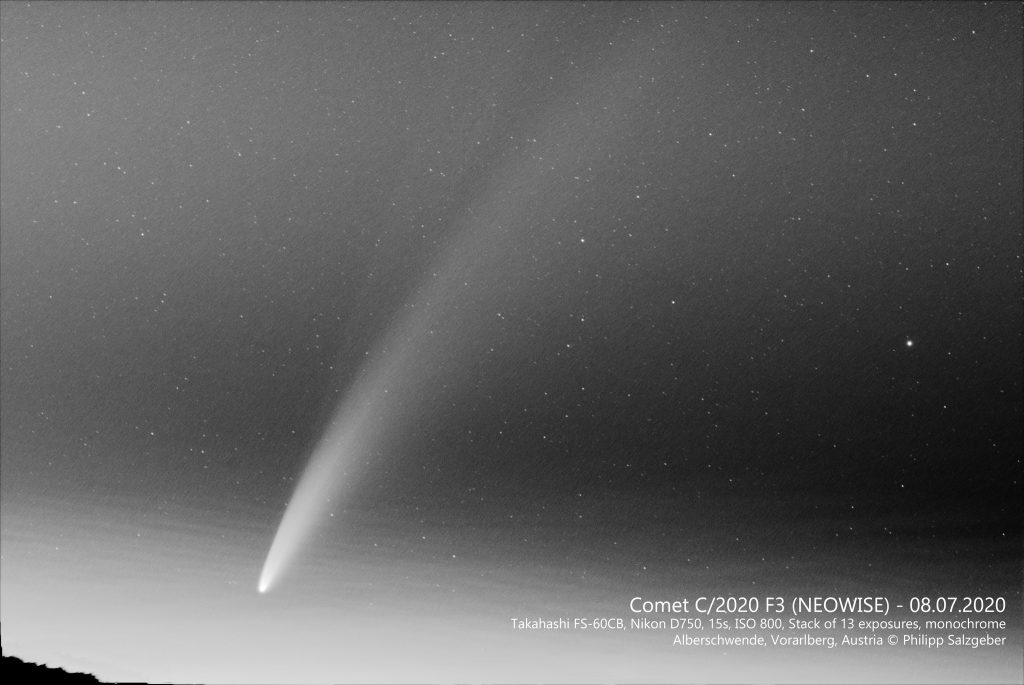
Alberschwende, Vorarlberg, Austria
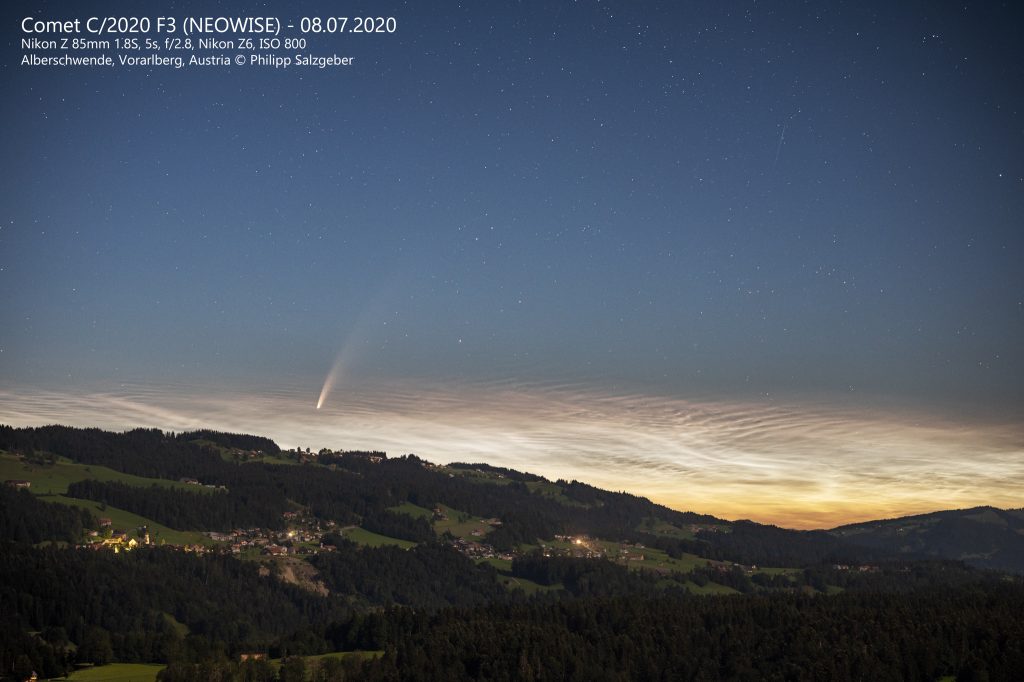
Alberschwende, Vorarlberg, Austria

2020-07-06
The next morning I decided to try to photograph the comet with the 127mm refractor. Clouds interfered a bit, but provided some nice color contrast as they were already lighting up in the early morning sky.
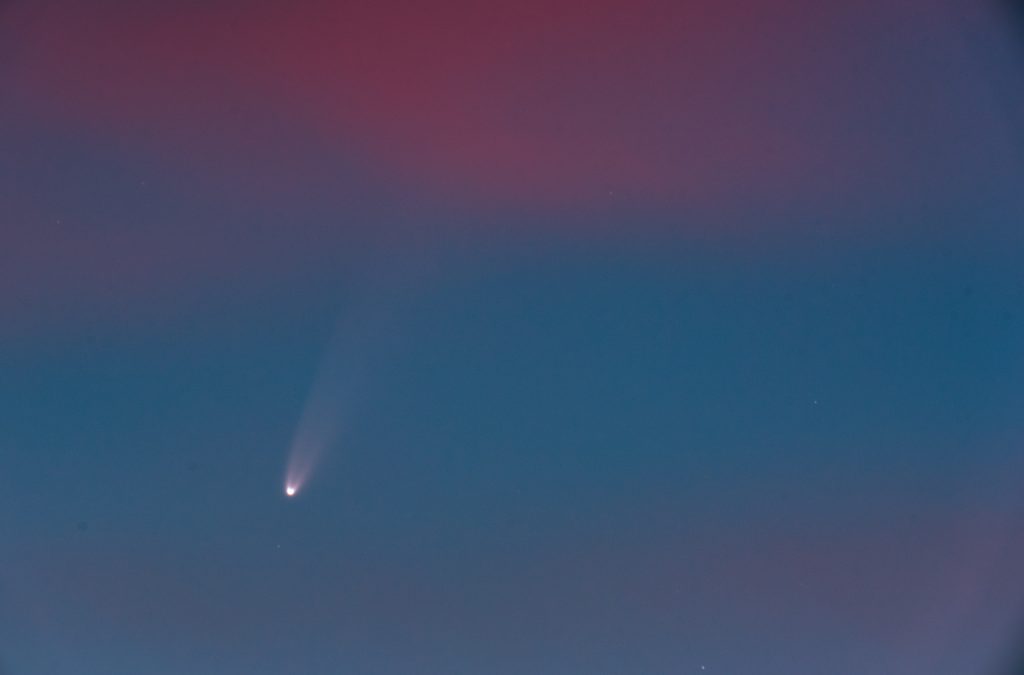
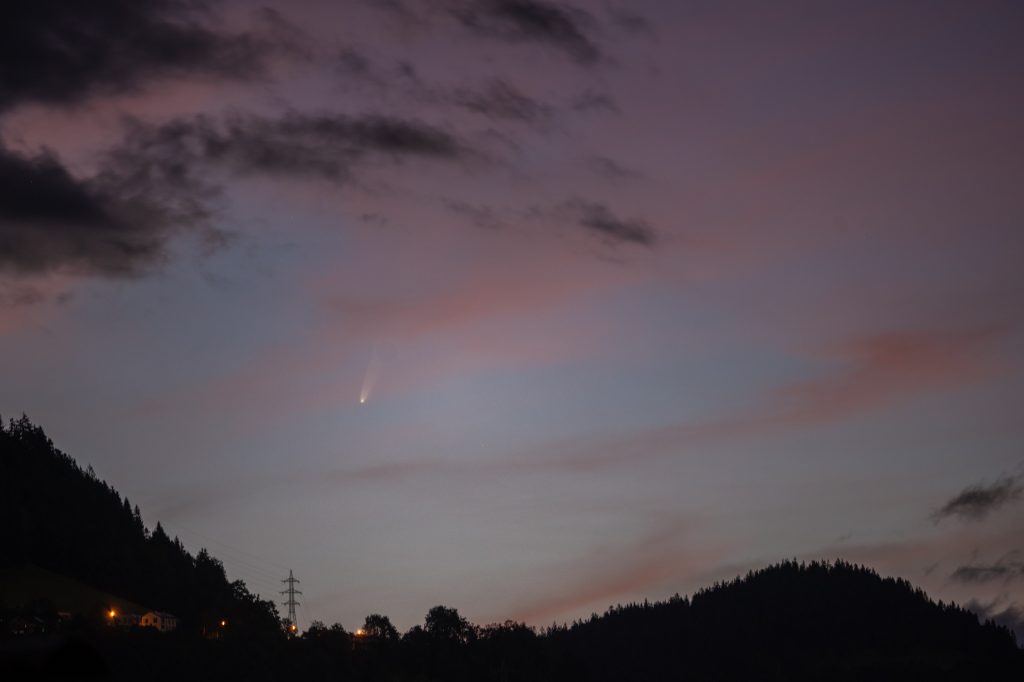
2020-07-05
After I didn’t see the comet the day before I got up really early and setup the camera with the 300mm lens on our roof, and waited for the comet to rise. Seeing the tail sticking out over the trees on the horizon literally gave me goosebumps.
